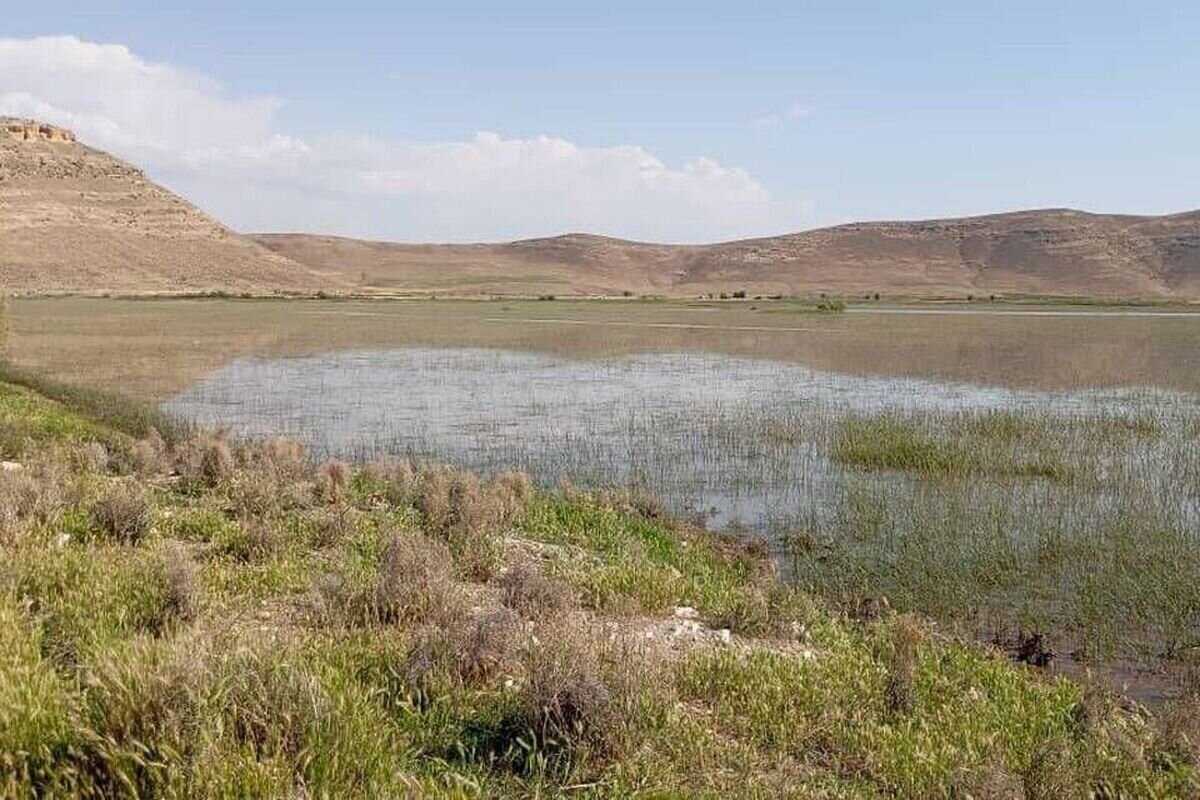Wetland being restored after 25 years

TEHRAN – Having been dried up for nearly 25 years, the Dargah Lotfollah wetland, located in Naqadeh county, northwestern West Azarbaijan province, is being revived, an official with the provincial department of environment has said.
Stretching over 25 hectares, the wetland has been restored through collaborative efforts of the West Azarbaijan department of environment and Lake Urmia Restoration Headquarters, IRIB quoted Saeed Shahand as saying.
Approximately, one and a half million cubic meters of water have entered the wetland, filling it by almost 80 percent. In the next few days, 500 more million cubic meters of water will flow into the wetland to fill its full capacity.
It is one of the satellite wetlands (surrounding wetlands) of Lake Urmia National Park, which is ecologically located along the bird migration route.
The wetland annually hosts native and migratory birds, including flamingos and pelicans.
Highlighting the role of people in the restoration of wetlands, Shahand said, “In addition to the above-mentioned factors, the participation of local communities and native people highly contributed to the restoration of the wetland.”
“This is a typical example of the popularization of environmental protection and the restoration of wetlands,” the official added.
He went on to say the wetland’s water right is supplied by the Godar river in Naqadeh. With the arrangements made, the allocated water is released into the wetland.
Preservation of wetlands with an ecosystem approach
The ecosystem approach for the protection and management of 46 wetlands across the country is being used.
The approach is based on the application of appropriate scientific methodologies focused on levels of biological organization, which encompass the essential structure, processes, functions, and interactions among organisms and their environment.
It was launched in the Iranian calendar year 1384 (March 2005-March 2006) in Parishan and Shadegan wetlands as well as Lake Urmia, ISNA reported.
The Convention on Biological Diversity (CBD) defines the ecosystem approach as “a strategy for the integrated management of land, water, and living resources that promotes conservation and sustainable use in an equitable way".
It goes beyond examining single issues, species, or ecosystem functions in isolation. Instead, it recognizes ecological systems for what they are: rich mixes of elements that interact with each other continuously. This understanding is particularly important for coasts and seas, where the nature of water keeps systems and functions connected.
The Approach is also a way of making decisions in order to manage human activities sustainably. It recognizes that human activities both affect the ecosystem and depend on it. Thus, it aims to improve the way human activities are managed for the protection of the marine environment.
In 2015, the DOE initiated an effort with the United Nations Development Program (UNDP) aiming to preserve and revive the country's wetlands.
In the next phase in 2017, the government of Japan supported the project focusing on the sustainable management of water and soil resources around Urmia Lake as well as Shadegan and Bakhtegan wetlands.
It is a five-year plan, voluntarily supported by Japan, to take advantage of both their financial and technical assistance, ISNA quoted Mojtaba Zoljoodi, an official with the Department of Environment, as saying. Three years have passed since the implementation of the project, he added.
“To implement the program in the remaining two years, we are consulting with the government of Japan and other governments that are willing to cooperate with Iran to be able to implement the project properly.
The plan to conserve Iran's wetlands is one of the good practical projects that, if continues, can help not only the wetlands of Iran but also the wetlands of other countries.”
The results of the implementation of the project in 200 villages concerning water consumption have shown that a good amount of water in the agriculture sector has been saved. In addition, productivity, quality of the products, and the economic income of the family have increased.
MT/MG
Leave a Comment